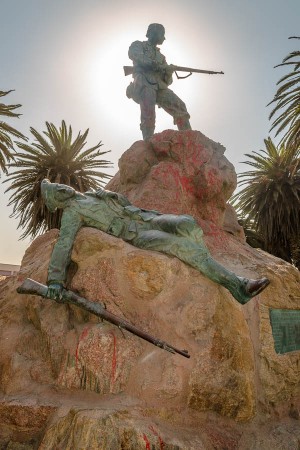 Swakopmund always feels a little odd, like a piece of Germany somehow teleported into Namibia’s remote and thinly populated Atlantic Coast. Even in that context, the presence of the Marinedenkmal in the centre of town feels utterly weird.
Swakopmund always feels a little odd, like a piece of Germany somehow teleported into Namibia’s remote and thinly populated Atlantic Coast. Even in that context, the presence of the Marinedenkmal in the centre of town feels utterly weird.
The statue memorialises the German marines who died in the suppression of the uprising of the Herero and Nama peoples in what was then German South West Africa in 1904-5. Although the plaque states that they “Mit Gott für Kaiser und Reich Kämpften” (fought with God for Kaiser and Empire), it is widely accepted that the German suppression of the rebellion was the 20th Century’s first major genocide. German troops killed not only indigenous fighters, but non-combatant men, women and children in intentional acts of collective punishment. Others were driven into the desert to die of thirst and exposure, or simply allowed to die of exhaustion. Survivors of the massacre were put into forced labour camps. Around 50% of Nama and 80% of Herero died in the revolt and the three years of collective punishment which followed.
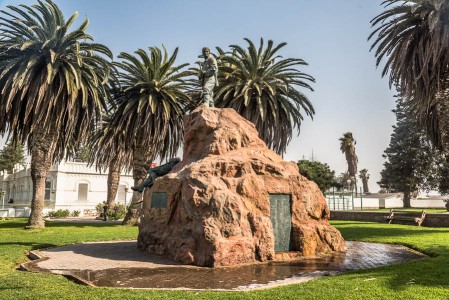
Both of these groups are among the most significant players in independent Namibia – as indeed are German Namibians – so it goes without saying that the continued presence of these memorials is controversial. The red paint visible in these photographs was splashed on the Marinedenkmal in 2016 by campaigners for reparations from the German government. But it is not only German Namibians who support the statues’ continued presence. Herero politicians have argued that the statues act as a public reminder of past crimes.
I have little doubt that the significance of German Namibians, although only around 2% of the population, to the country’s economy must also play some part. Perhaps also some desire to the country’s past behind it, although this is still a topic that gives rise to burning passions.
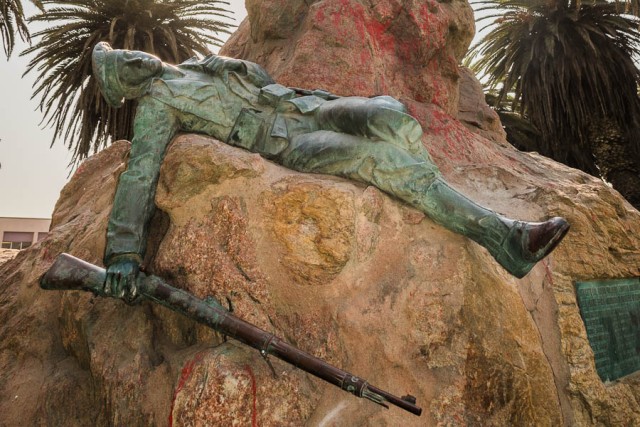
The statue was designed and cast in Berlin, and presented to the town by the crew of the German gunboat, Panther , in July 1908. It was commissioned in 1907 by the Marine Infantry in Kiel, Germany, and designed by sculptor AM Wolff.
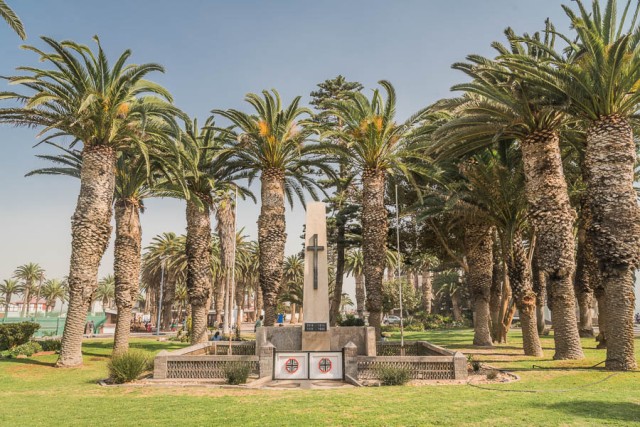
There is also a memorial to the German dead of both the First and Second World Wars a few hundred metres away. By the time of the latter conflict, South West Africa had long been under the suzerainty of South Africa, which was a belligerent on the Allied side. Albeit there was quite a bit of sympathy for the Nazis among both Germans and Afrikaners in both Namibia and South Africa. Strange indeed.
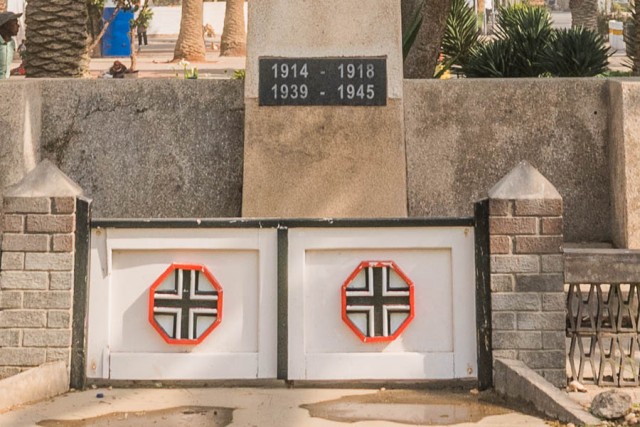






Apparently Germans SWAs (as they were in WWII) were transmitting to Germany during WWII. also not this massacre of Hereros was organised by a Herr Goering whose brat ran the Luftwaffe
Reblogged this on Peddling and Scaling God and Darwin and commented:
An account of the first genocides of the 20th century. Of the Herero and Nama people of then German Southwest Africa and now Namibia.
The man in charge was a Herr Goerig, who’s brat Hermann was in charge of the Luftwaffe
It makes all monuments to former people, including Confederates in the American civil war seem inoffensive to anyone
One bit of history which is little known
Regarding the Holocaust, the Germans present a model of how to acknowledge past crimes.
Hw do English-descent South Africans handle the memory of the Boer War concentration camps, about which I learnt remarkably little at school? And how bad were they?
They were really, really, bad. And there is even now some bitterness from some Afrikaners about them. But all enfolded into the gigantic meta-horror that was colonialism in SA.